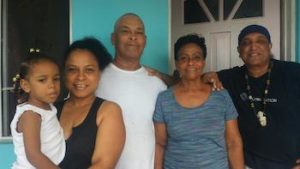
*The Arawak community, a non-white community of Indigenous peoples of South America and the Caribbean, celebrated this date in 1500.
Specifically, the term "Arawak" has been applied at various times to the Lokono of South America and the Taíno, who historically lived in the Greater Antilles and the northern Lesser Antilles in the Caribbean. All these groups spoke related Arawakan languages. The term Arawak was originally applied by white Europeans, specifically to the South American community who self-identified as Arawak, Arhuaco, or Lokono. Their Arawak language is the name of the overall Arawakan language family. Arawakan speakers in the Caribbean were also historically known as the Taíno, a term meaning “relative”.
In 1871, ethnologist Daniel Garrison Brinton proposed calling the Caribbean populace "Island Arawak" due to their cultural and linguistic similarities with the mainland Arawak. Subsequent scholars shortened this convention to "Arawak," creating confusion between the island and mainland groups. In the 20th century, scholars such as Irving Rouse resumed using "Taíno" for the Caribbean group to emphasize their distinct culture and language.
The Arawakan languages may have emerged in the Orinoco River valley. They spread widely, becoming the most extensive language family in South America during white-European contact, with speakers in various areas along the Orinoco and Amazonian rivers and tributaries. The group that self-identified as the Arawak, also known as the Lokono, settled the coastal areas of Guyana, Suriname, Grenada, Jamaica, and parts of the islands of Trinidad and Tobago. The Spaniards arrived in the Americas in 1492 and later in Puerto Rico, but did not bring women on their first expeditions.
Many explorers and early colonists interbred with Taíno women who subsequently bore mestizo or mixed-race children. These races include other Indigenous groups, Spaniards/Europeans, and the African slaves brought over during the Middle Passage. Through the intersectionality of the generations, numerous mixed-race descendants still identify as Taíno or Lokono. In the 21st century, these descendants, about 10,000 Lokono, live primarily in the coastal areas of Venezuela, Guyana, Suriname, and French Guiana, with additional Lokono living throughout the larger region. Unlike many indigenous groups in South America, the Lokono population is growing.